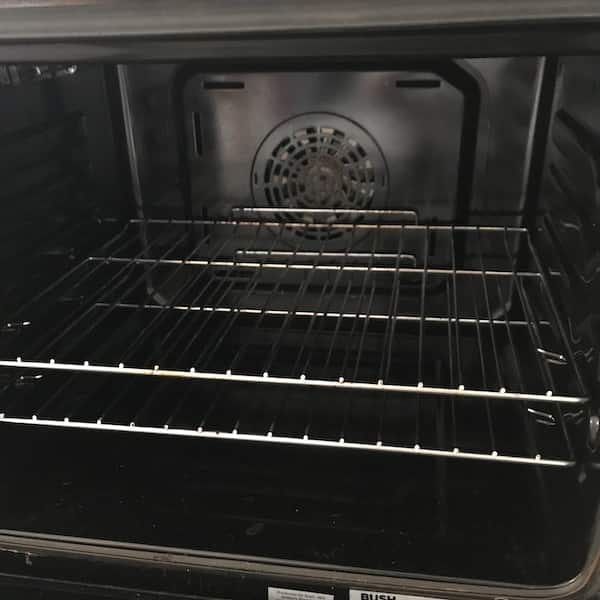Banana Bread, also known as banana loaf and banana cake, is not bread, it’s a cake! It was named a bread or loaf as it was originally baked in a loaf tin.
Banana bread is a deliciously moist cake. You can make a classic Banana Bread or vary it by
adding other favourite ingredients. But please be mindful to follow each varied recipe rather
than winging it! As I always mention to our novices – baking is a science thing and the
right balance of ingredients is essential. Otherwise, you’ll end up with things going wrong
with your cake!!!!
Did you know that there is such thing as a National Banana Bread Day? Yep, there is on
February 23.
This article may contain affiliate links. As an Associate with Amazon and other companies, we may earn a commission if you click and purchase with one of our links. There’s no extra cost to you. Thanks!
EQUIPMENT NEEDED
Use an approx. 8½” x 4½” loaf tin or a pyrex/glass loaf shape dish
Medium size bowl
Electric hand whisk or food mixer
Spatula
Teaspoon
Newspaper & string or a cake belt
Parchment /Grease proof paper
INGREDIENTS
250g (9 ounces/ 2 cups) Plain-all-purpose flour
2 teaspoons Baking Powder
1 teaspoon good quality fine salt like Kosher
¼ teaspoon cinnamon (optional)
¼ teaspoon nutmeg (optional)
175g (6 ounces/¾ cup) Good quality ‘unsalted’ spreadable butter or butter
200g (7 ounces/1 cup sugar) white/golden Caster Sugar or half white/half brown
2 Free Range Eggs – large (room temperature)
1 teaspoon vanilla extract (optional)
3 tablespoons dark rum (optional)
330g (11.5 ounces) ripe mashed bananas. (Approx. 450g with peel on)
Butter, Spread or cake release spray
Tip- What to do with overripe and black bananas
Please do use very ripe bananas. Ripe bananas are bruised looking with black spots or
heavily blacken skins. That’s the perfect time to use your bananas.
There are two main reasons for this:
- The bananas mash easier
- The more ripe bananas are, the sweeter they are and stronger flavour they have.
They flavour the cake better!
INSTRUCTIONS
Step 1 – Prepare your Oven
Ensure your oven rack is moved to the 2nd lowest position from the bottom.
Place your oven thermometer in the oven if you have one.
Heat oven to 350 ºF, 180/170C fan assist oven, gas 4.
An oven thermometer is a really inexpensive piece of equipment, but worth its weight in gold.
All ovens cook at different temperatures and if you want great cakes, you need to know you’re baking at the right temperature.

Step 2 – Prepare your loaf tin
Grease with butter or spray your loaf tin/glass Pyrex dish.
Line the bottom with a rectangle piece of parchment paper.
Soak your cake belt in cold water, squeeze out surplus water. Wrap your tin with a cake belt or foil.
Step 3 - Weigh the ingredients individually
Step 4 - In a separate bowl sieve, the flour, baking powder and salt (cinnamon & nutmeg optional)
Tip – Always try to sieve the dry ingredients i.e., flour, raising agents, cocoa, icing sugar etc
before adding it to your mixture. Sifting aerates the flour. This benefits the baking in many
ways. It allows for a lighter and airy texture in a finished baked good. It also reduces any
clumps of flour, raising agents in the batter.
Step 5 - The Creaming Method
Ensure the spreadable butter or butter is at room temperature. Why? If the butter is too cold, the sugar won’t be strong enough to ‘get’ the pockets of ai
Place the spread/butter in a large mixing bowl and beat for about 1 minutes.
Then add the sugar and o together for about another 2-3 minutes until creamy and light in colour. You can use a stand mixer using the paddle attachment or a hand mixer
If there is batter up the sides of the bowl then scrape the side of the bowl and beat again.
The batter should be light and fluffy
Step 6 – Add the eggs (& vanilla, rum if using)
Add one egg at a time and whisk together for 1-2 minutes or until the mixture is light and glossy. Don’t over-mix
Tip – It’s important to use room temperature eggs (not straight out from the fridge) when
baking. Room temperature eggs disperse more easily and evenly in the batter. Since eggs
place an important part in the structure, even distribution is important for texture. Room
temperature eggs bind more easily to other ingredients
Step 7 – Add the mashed banana. Mix well
Step 8 – Add the sieved ingredients (flour, baking powder & salt) and fold into the mixture carefully. (Cinnamon, Nutmeg optional)
Step 9
Use a silicone spatula to scrape all of the mixture (batter) evenly into your prepared
cake/loaf tin
When all the mixture (batter) has been poured, use a spoon, angled pallet knife or
spatula to spread out the mixture evenly.
Step 10 - Bake for approx. 1 hour to 1 hour and 15 m mins
How do I know when it’s cooked?
It should be springy when gently pressed
The edges pull away from the Cake Tin
And last and final test is using a skewer to check. Open the oven door. No need to get the cake out
Insert the Skewer into the middle of the sponge. If the skewer comes out clean, it’s done. If it comes out gummy or with crumbs clinging to it, the cake needs more time in the oven.
Reset your time for another 5 mins.
Tip This does take some practice. But if you use the above tell signs along with sticking to
exact weight of ingredients, recipe and instructions then there’s less chance of your sponge
going wrong.
Tip – Whatever you do DON’T open the door to have a sneak peek or test the cake until near
it’s baking end time and you notice the tell signs. Early peeking with cause your sponge to
sink/collapse. Been there!
Step 11
When cooked place the pan/tin on top of your hob
Cool for about 30 mins or until the pan/tin is cool enough to touch
CONCLUSION
A delicious banana loaf for any time of day, just yum! Even great for kid’s lunch boxes.
Your banana loaf will keep in an air tight container in the cupboard on or on your worktop for at least a week. No need to refrigerate.
Enjoy with a lovely cuppa!
Problems with your Banana Loaf
There are a number of things that can go wrong. I will help you overcome some of the common problems when baking a banana loaf.
Dark Brown/ Burnt looking Crust
Did you use baking soda instead of baking soda?
Did you use all dark brown sugar?
Open set a wrong temperature or your oven if cooking unevenly
Solutions
Dark brown sugar and baking soda or using too much can sometimes cause darkening of the crust
Set oven at correct temperature
Use an oven thermometer and adjust accordingly
Ensure the cake is not put on the top shelve of the oven
Gooey/Gummy and Soggy bottom
It could be under cooked
Did you defer from the recipe and/or add more wet ingredients?
Did you use frozen bananas?
Did you add in more bananas thinking it would add a more banana flavour?
Solutions
Always stick to the recipe. Always use a skewer as the final testing a cake if its cooked
Allow the bananas to defrost and drain off the excess water
The riper the bananas the stronger flavour you’ll get in the cake
Sunken Middle
This could be you didn’t use enough raise agent – baking powder
Is your baking powder in date? If not. the active may have diminished
Did you peek and open the oven too early?
Solution Always stick to the recipe
I can’t taste the bananas
Did you use ripe bananas?
Did you use baking soda or too much of it?
Solution
The riper the bananas the stronger flavour you’ll get in the cake
Try to use baking powder instead of baking soda
